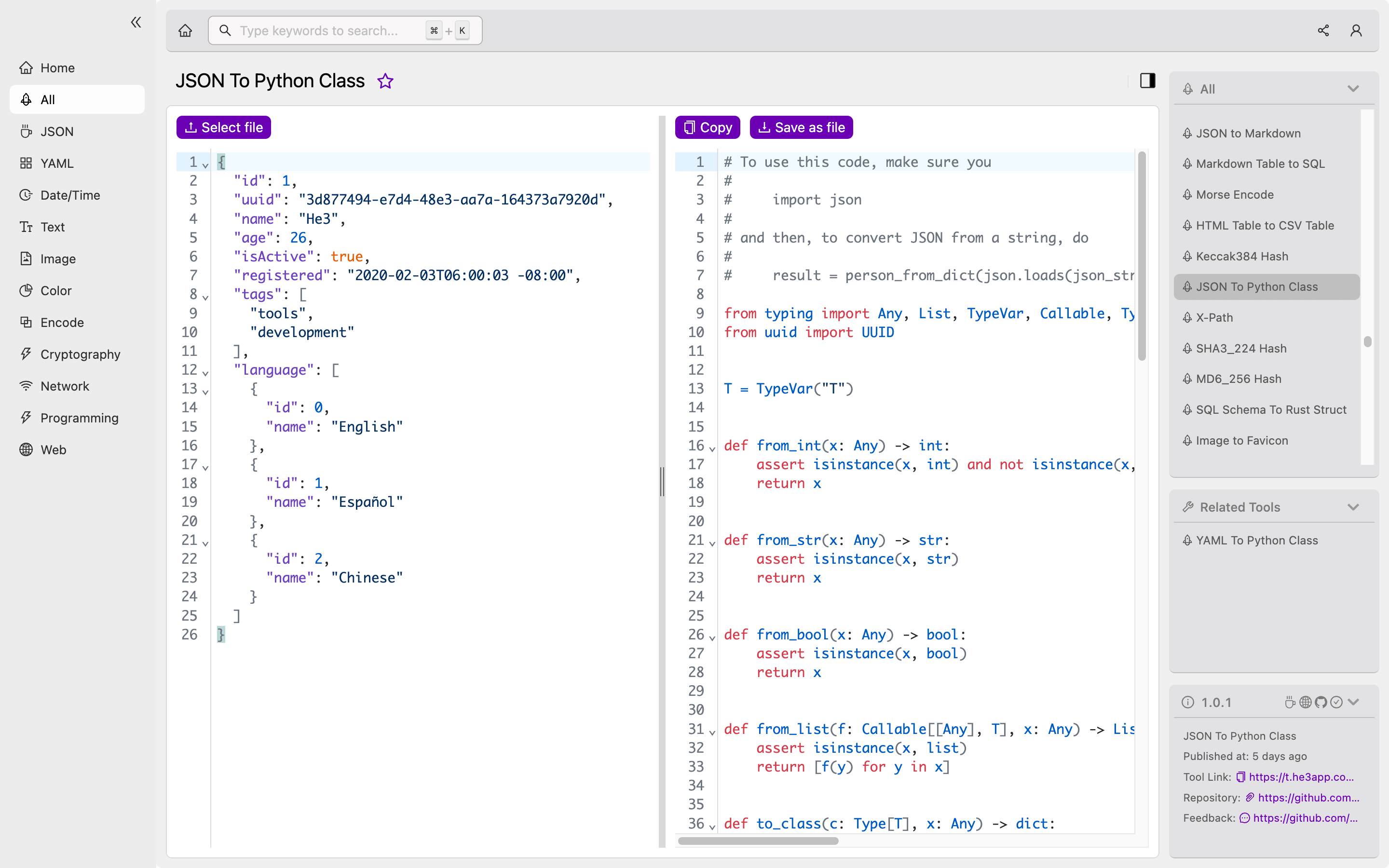Introduction
JSON (JavaScript Object Notation) is a popular data interchange format used mainly in web development. It is easy to read and write, and lightweight, making it a preferred choice for data transfer between client and server. On the other hand, Python is a widely-used, high-level programming language that is known for its simplicity and readability.
JSON to Python Class conversion allows developers to map JSON data to a Python class easily. The conversion process can be done manually or with the help of tools. In this article, we will discuss the concept of JSON to Python Class conversion, how it works, and scenarios where developers can use it.
How to Convert JSON to Python Class
If you want to convert JSON to Python Class without any external tools, you need to create a Python class and map the JSON data to it. Here is an example of how to do it:
import json
class Person:
def __init__(self, name, age, city):
self.name = name
self.age = age
self.city = city
json_string = '{"name": "John", "age": 30, "city": "New York"}'
json_dict = json.loads(json_string)
person = Person(json_dict['name'], json_dict['age'], json_dict['city'])Or you can use JSON To Python Class tool in He3 Toolbox (https://t.he3app.com?cezo ) easily.

The above code creates a Python class Person with name, age, and city attributes. Then, it loads the JSON string into a Python dictionary using the json.loads method. Finally, it maps the dictionary values to the Person class attributes to create a person object.
Scenarios for Developers
JSON to Python Class conversion can be useful in various scenarios for developers. Here are some examples:
- When working with REST APIs that return JSON data, developers can use JSON to Python Class conversion to map the data to Python objects easily.
- When working with NoSQL databases that store data in a JSON format, developers can use JSON to Python Class conversion to map the data to Python objects and manipulate it easily.
- When working with data analysis or data visualization libraries in Python, developers can use JSON to Python Class conversion to convert JSON data to Python objects for further analysis or visualization.
Key Features
Here are some key features of JSON to Python Class conversion:
| Feature | Description |
|---|---|
| Map JSON to Python class easily | JSON to Python Class conversion allows developers to map JSON data to Python classes easily, making it easier to work with the data. |
| Supports nested JSON | JSON to Python Class conversion supports nested JSON data, allowing developers to create complex Python object hierarchies. |
| Can handle optional fields | JSON to Python Class conversion can handle optional fields in JSON data and map them to Python object attributes. |
Misconceptions and FAQs
Misconception: JSON is always valid Python
JSON and Python have some similarities, but they are not the same. JSON is a string-based data interchange format, while Python is a programming language. Although Python has built-in support for parsing JSON data, JSON is not always valid Python code.
FAQ: What is the difference between json.loads and json.load?
json.loads method loads a JSON string into a Python dictionary, while json.load method loads a JSON file into a Python dictionary.
FAQ: Is JSON case-sensitive?
Yes, JSON is case-sensitive. "name" and "Name" are not the same in JSON.
Conclusion
JSON to Python Class conversion is a useful technique that allows developers to map JSON data to Python classes easily. This feature is handy when working with REST APIs, NoSQL databases, or data analysis libraries. In this article, we have shown how to convert JSON to Python Class manually and with the help of external tools. We have also discussed some common misconceptions and FAQs related to JSON and Python.
References:
